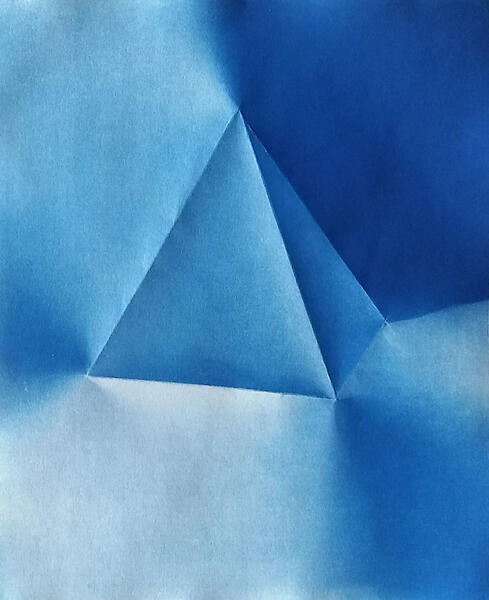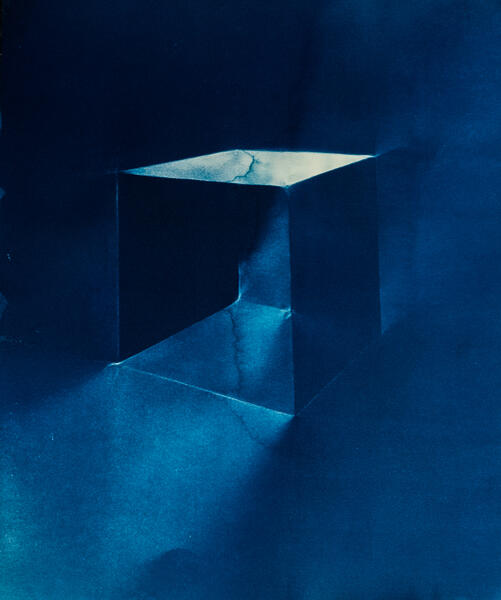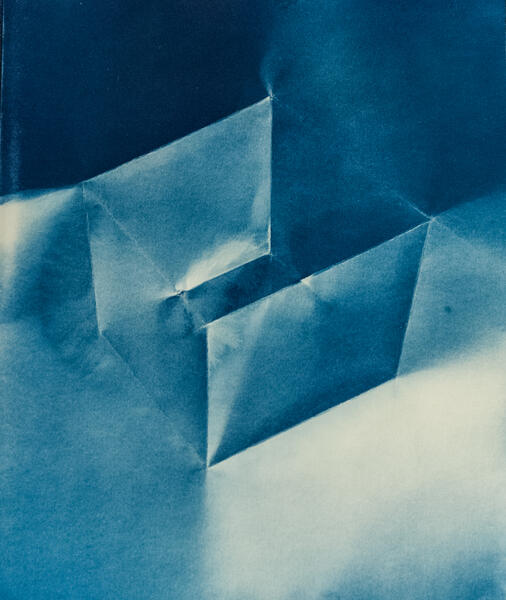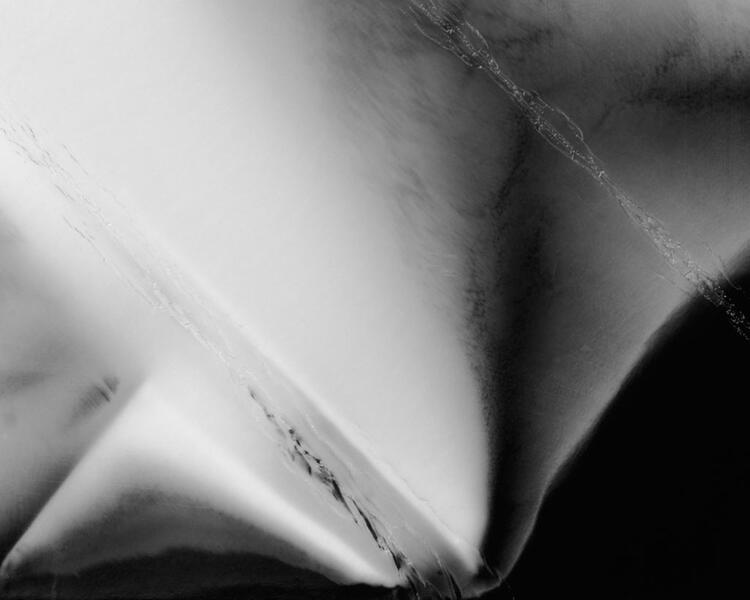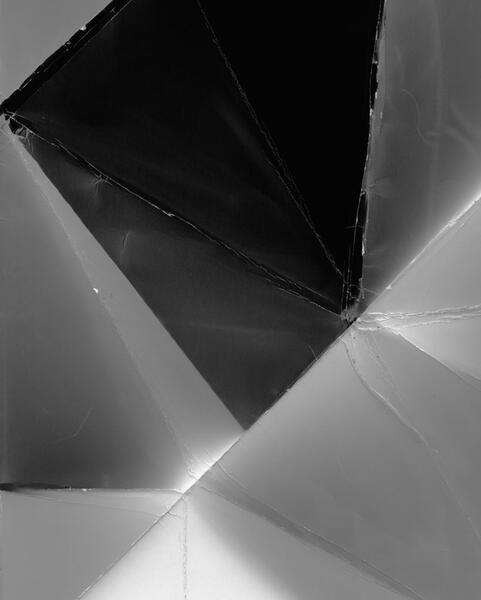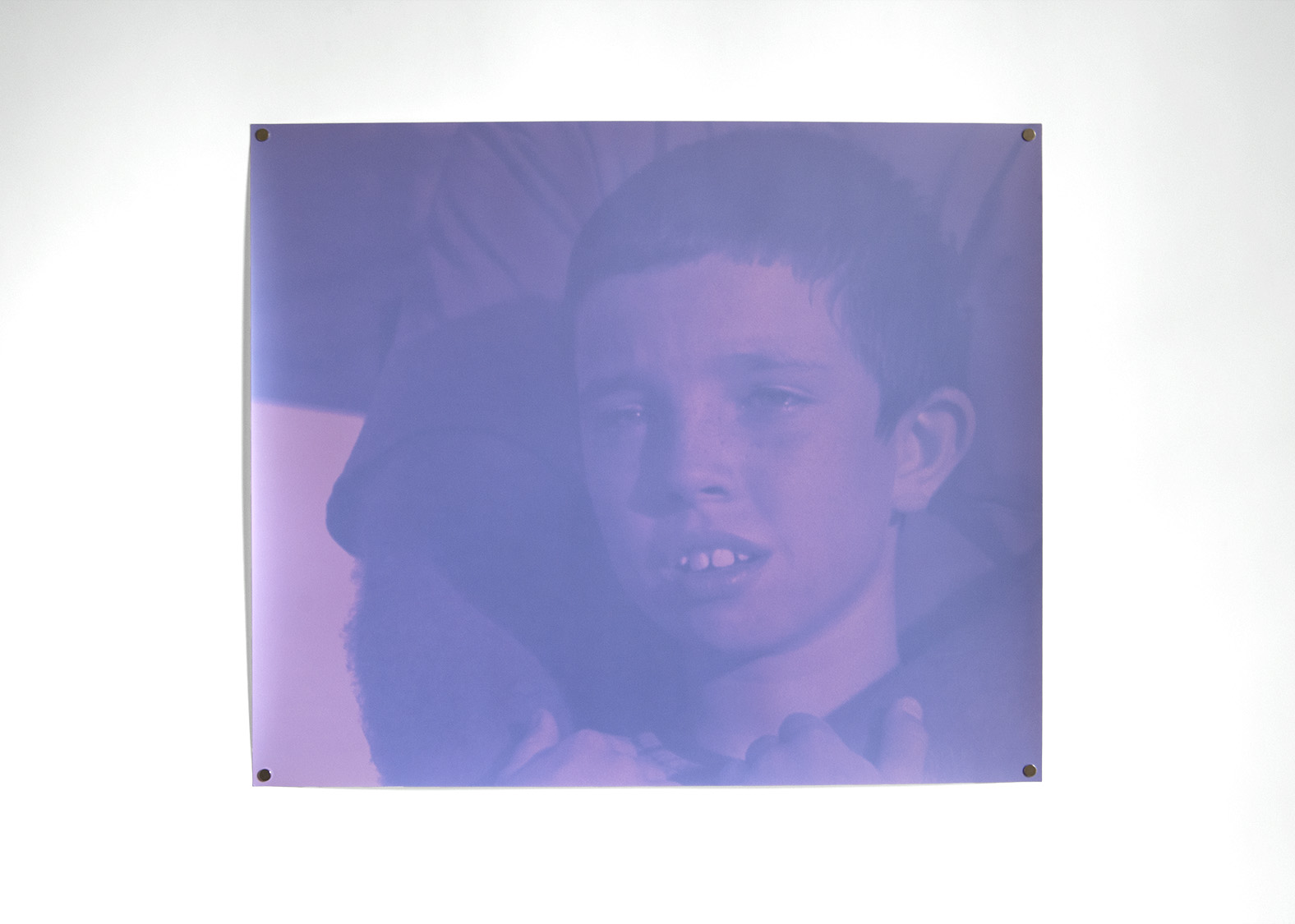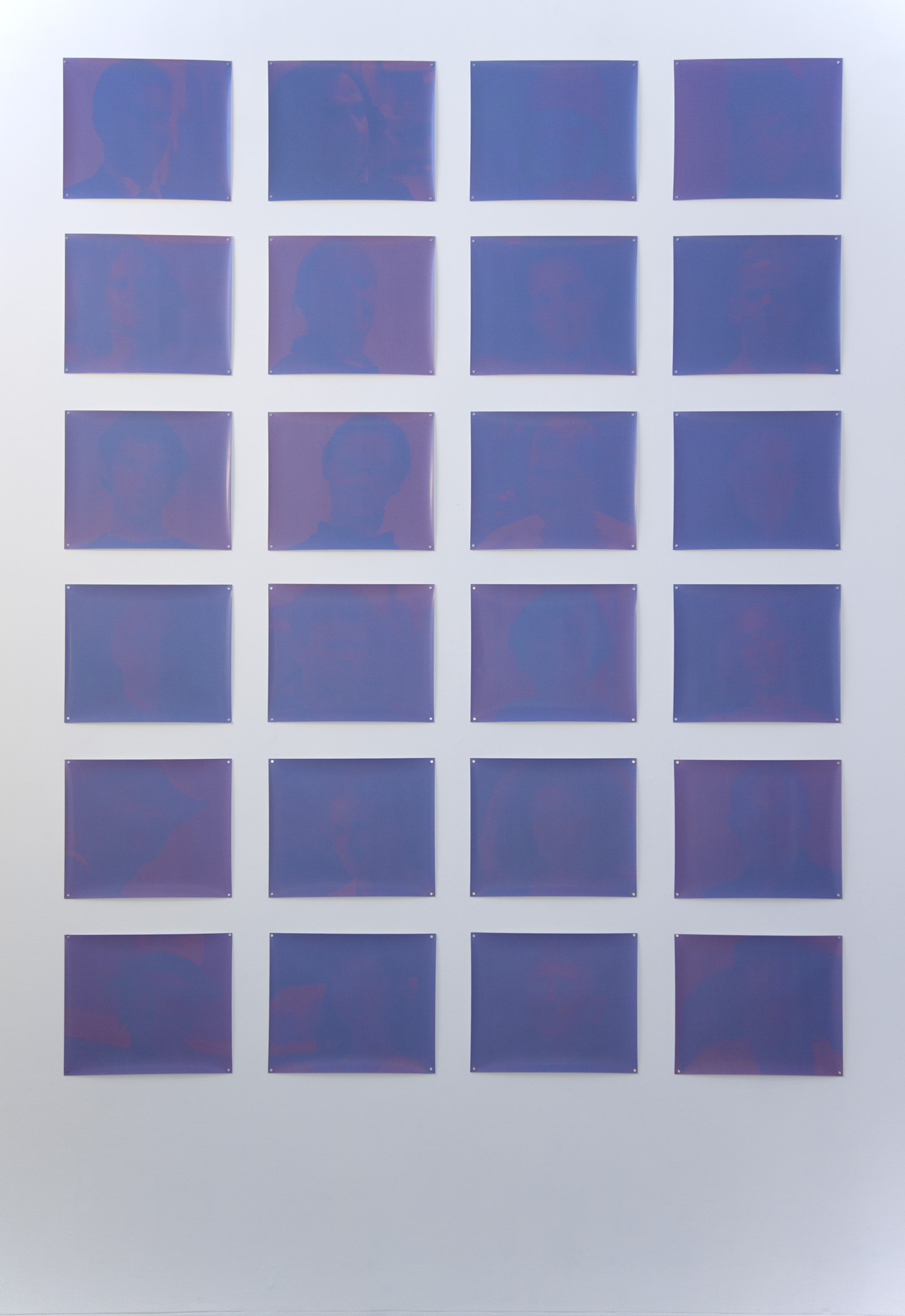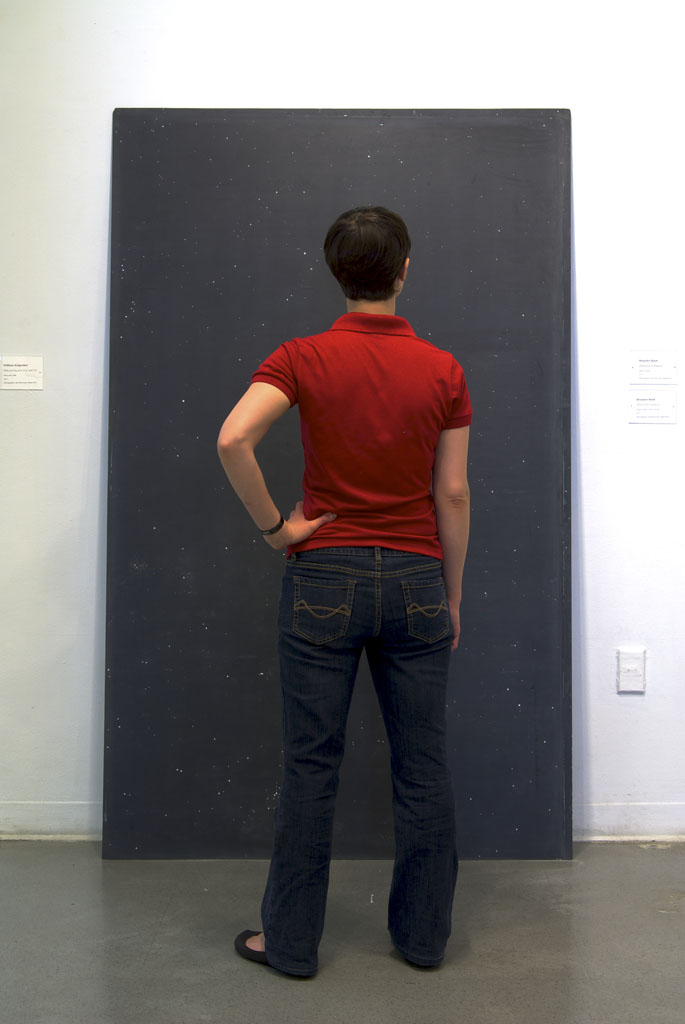About William
Knipscher was born in Kensington, MD and grew up on the coast of New Jersey. He received his MFA in Photographic and Electronic Media from the Maryland Institute College of Art and received his BFA from the Corcoran College of… more
How To Photograph An Idea
-Le Corbusier, Towards a New Architecture
In the current age we are more than ever surrounded by the man made material form. These geometries appear over and again in architecture and the design of everyday objects: cube, sphere, cylinder, pyramid. The photographs presented here come from an evolving body of work that explores these shapes photographically through a semi-plastic process. They are shaped by hand and held in the sun until their latent geometry emerges. Produced without the aid of a camera, they are at once something and nothing. Not the photograph of a cube, but perhaps the photograph of the geometry that signals the cube. Their literal message is unmistakable, but the range of possible attributable meanings is almost endless.
Where The Light Goes
The closet in the room contains origami cranes folded from unprocessed, silver gelatin photo paper. The closet becomes an exposure unit that is activated by the viewer when they open the closet door. The viewer becomes an active participant in the work. The catch is that their action is not readily apparent and can only be seen through repeated visits as the exposure process is inherently slow. This isn’t to say that the onetime viewer receives no pleasure, but time spent with the work is rewarded by repeated visits.
The commissioned piece for the Carnegie is an enlargement, approx. 50”x60”, of a small 8”x10” cyanotype. This piece was created with the idea of folding and exposing a piece of coated paper to replicate the experience of a three-dimensional space. My cyanotype work is similar to my folded silver gelatin work but differs in that I expose this work in the sun for minutes rather than seconds. Something I’ve been exploring with my cyanotype work is to create what look like photographic records of 3- dimensional solids such as cubes and pyramids which are in fact created solely through folding and selective exposure to the sun. Through this work I find myself interrogating, somewhat playfully, the nature of the photographic image, a vein that runs through much of my work.
The fundamental tendency of light to diffract around the edge of a surface is what makes these prints possible. It is something I explore with the freeform folding and bending of paper. Causing light to move through and around photosensitive material, I allow the medium to perform two roles as disrupter and recorder of light. In all these works of diffraction and folding there is an element of psychology as well, insofar as the resulting images assume an almost Rorschach aspect. What is it in the simple study of light, shadow and line that allows space for contemplation?
Can't Remember, Can't Forget
In order to play out this paradox, my work deals with images that are impermanent to begin with and undergoing a process of degradation from the moment of their installation. Lumen prints–made with unfixed black and white photo paper–of people I’ve photographed over the years hung floor to ceiling will darken and gradually fade as the sun and gallery lights illuminate them. Unbound anthotype prints–an unfixable photographic process using vegetable pigment–laid in a clamshell box contain unattributed quotes from scholars and philosophers of memory that can be freely handled and rearranged by the viewer. Lastly video that has been degraded through projecting and rerecording footage of nature is looped continuously.
I am fascinated by the power of light to create an image, and also destroy it. We measure lights effects on images and talk of permanence. In the end, images like our bodies and our memories have a finite life.
-
 Can't Remember, Can't Forget20" x 24", unfixed black and white photo paper, magnets
Can't Remember, Can't Forget20" x 24", unfixed black and white photo paper, magnets -
 Can't Remember, Can't Forget8.5" x 11", anthotype prints, watercolor paper, spinach pigment
Can't Remember, Can't Forget8.5" x 11", anthotype prints, watercolor paper, spinach pigment -
 Can't Remember, Can't Forget8.5" x 11", anthotype prints, watercolor paper, spinach pigment
Can't Remember, Can't Forget8.5" x 11", anthotype prints, watercolor paper, spinach pigment -
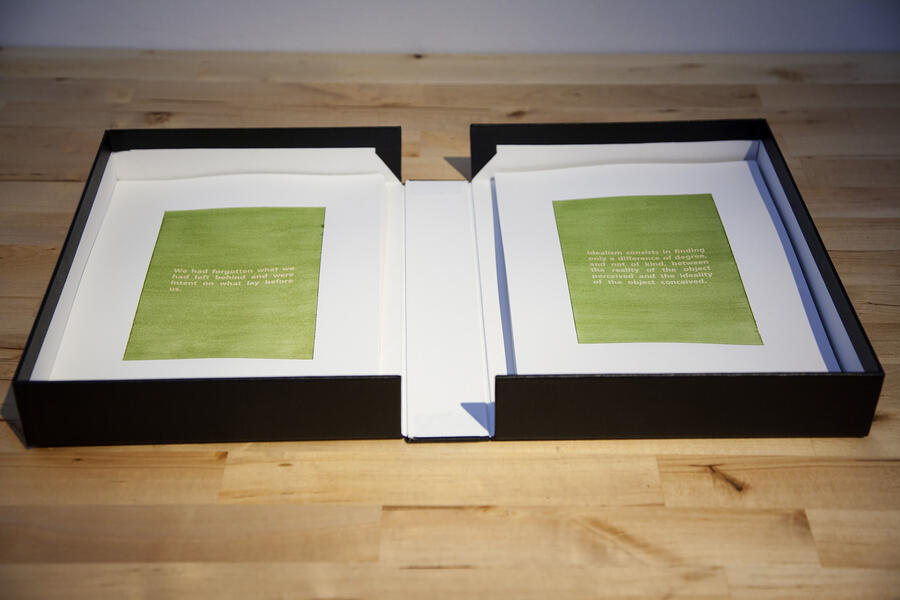 Can't Remember, Can't Forget (installation view)8.5" x 11", anthotype prints, clamshell box, table
Can't Remember, Can't Forget (installation view)8.5" x 11", anthotype prints, clamshell box, table -
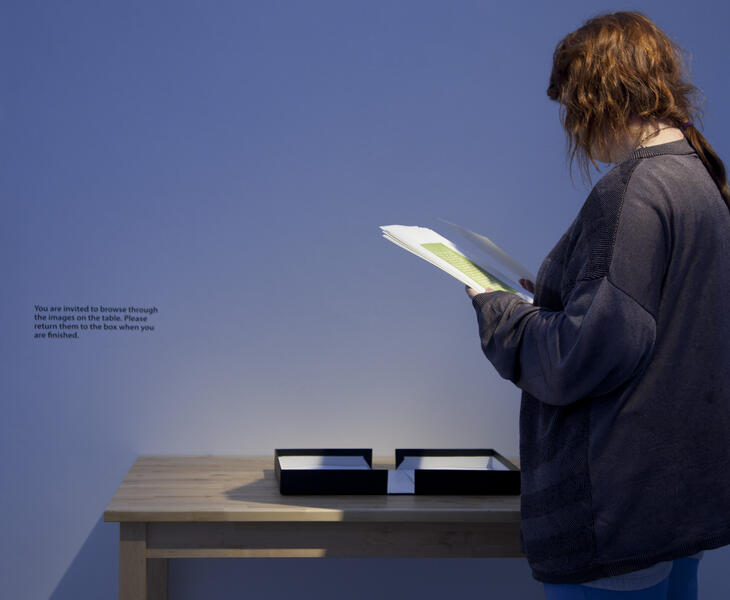 Can't Remember, Can't Forget (installation view)8.5" x 11", anthotype prints, clamshell box, table
Can't Remember, Can't Forget (installation view)8.5" x 11", anthotype prints, clamshell box, table -
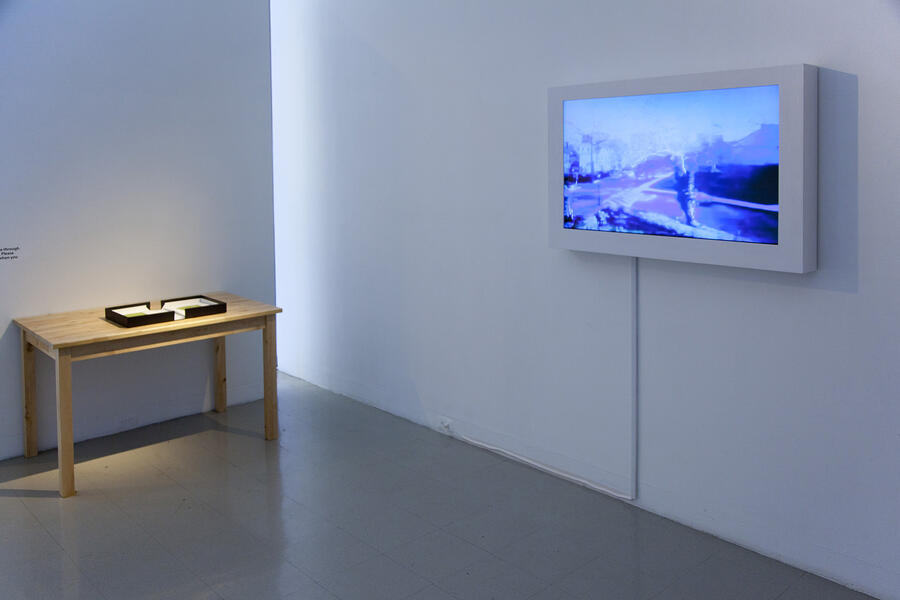 Can't Remember, Can't Forget5 minute looped video, dimensions variable
Can't Remember, Can't Forget5 minute looped video, dimensions variable -
 Can't Remember, Can't Forget (installation view)20" x 24" (each), unfixed black and white photo paper, magnets
Can't Remember, Can't Forget (installation view)20" x 24" (each), unfixed black and white photo paper, magnets -
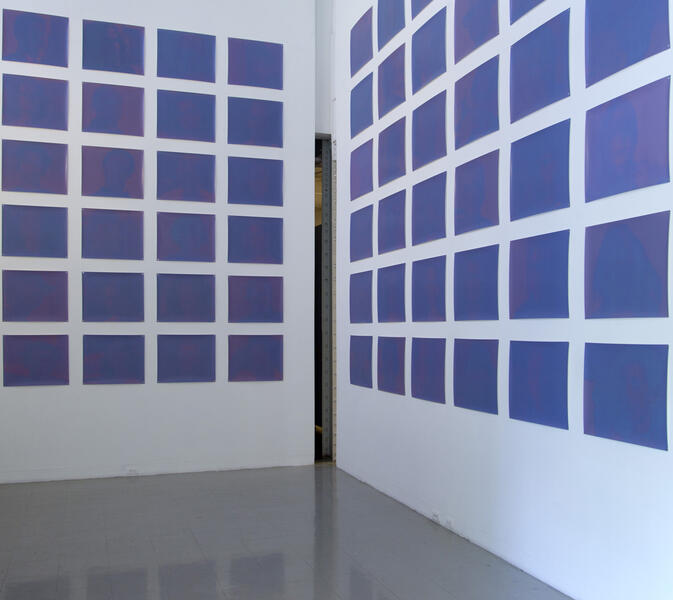 Can't Remember, Can't Forget (installation view)20" x 24" (each), unfixed black and white photo paper, magnets
Can't Remember, Can't Forget (installation view)20" x 24" (each), unfixed black and white photo paper, magnets -
 Can't Remember, Can't Forget (before & after)20" x 24", unfixed black and white photo paper, magnets
Can't Remember, Can't Forget (before & after)20" x 24", unfixed black and white photo paper, magnets -
Can't Remember, Can't Forgetdimensions variable, 5 minutes, video loop
"Then (39°18'32.45"N, 76°37'18.87"W)" and "Today (and every day till then)"
"Then (39°18'32.45"N, 76°37'18.87"W)" is more removed from the strictly corporeal, focusing instead on the movement of the cosmos and considering our small actions as humans in contrast with larger astronomical movements. The piece is chalk dust on a slate blackboard. It represents the alignment of stars when considered from the vantage point of a specific geographic location at the moment of my projected death, based on numerous online life expectancy calculators. In thinking about the movement of the stars over the course of a lifetime, one is at once made to feel the comparative brevity and impermanence of human life, and also the cyclic endurance of the natural world.
-
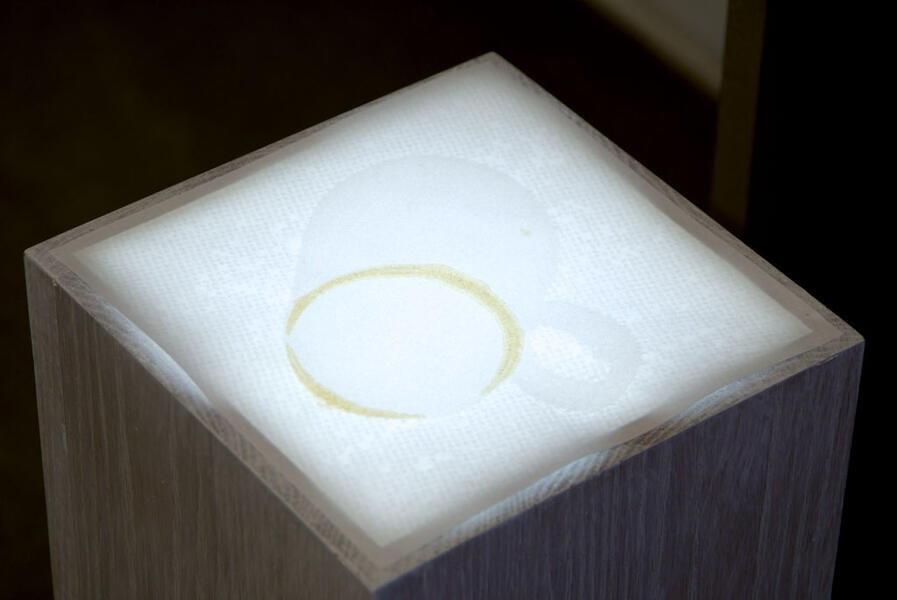 Today (and every day till then)handmade paper, watermark, lightbox, electronics
Today (and every day till then)handmade paper, watermark, lightbox, electronics -
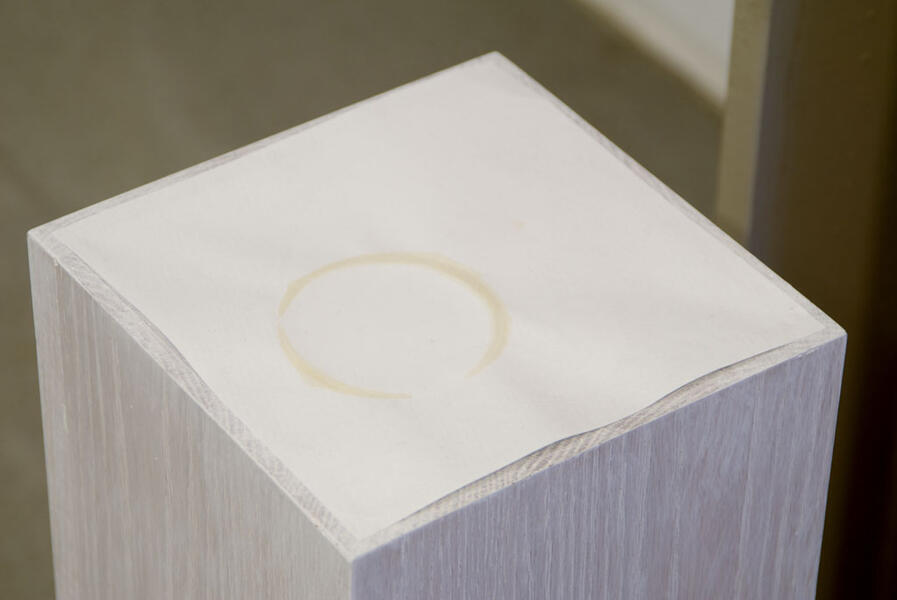 Today (and every day till then)handmade paper, watermark, lightbox, electronics
Today (and every day till then)handmade paper, watermark, lightbox, electronics -
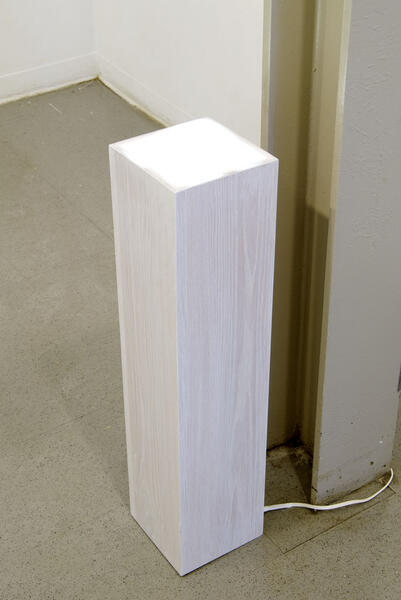 Today (and every day till then)handmade paper, watermark, lightbox, electronics
Today (and every day till then)handmade paper, watermark, lightbox, electronics -
 Then (39°18'32.45N, 76°37'18.87W)78" x 48", slate, chalk dust (installation view)
Then (39°18'32.45N, 76°37'18.87W)78" x 48", slate, chalk dust (installation view) -
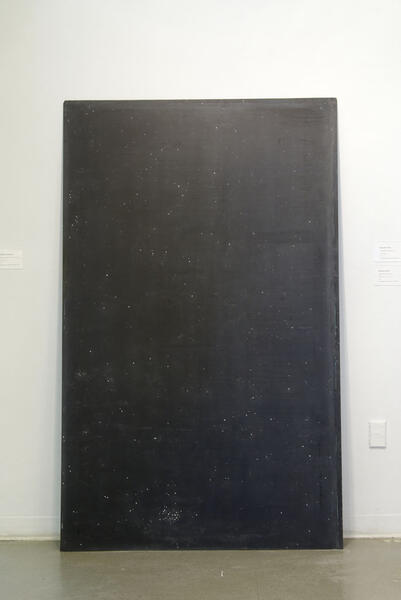 Then (39°18'32.45N, 76°37'18.87W)78" x 48", slate, chalk dust
Then (39°18'32.45N, 76°37'18.87W)78" x 48", slate, chalk dust -
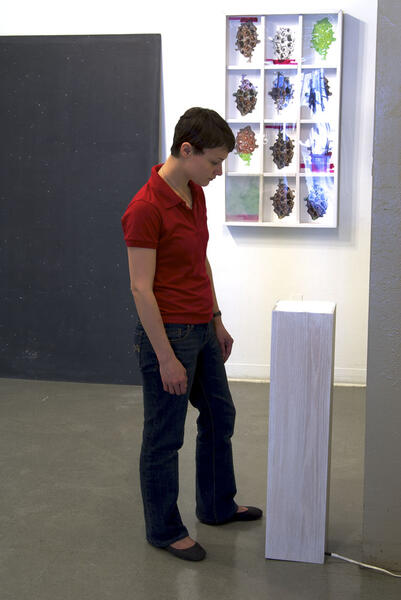 "Then (39°18'32.45"N, 76°37'18.8"W)" and "Today (and every day till then)"installation view
"Then (39°18'32.45"N, 76°37'18.8"W)" and "Today (and every day till then)"installation view
Redaction
-
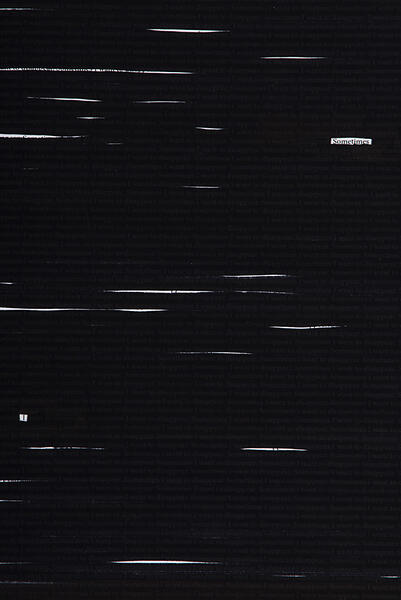 Sometimes... (detail)24" x 36", 2011, pigment print, sharpie
Sometimes... (detail)24" x 36", 2011, pigment print, sharpie -
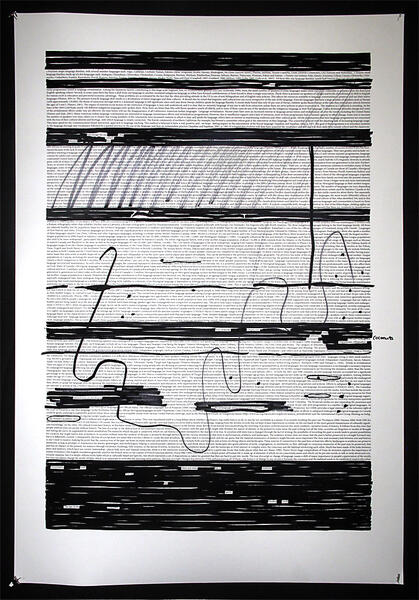 Redaction 624" x 36", 2011, pigment print, sharpie
Redaction 624" x 36", 2011, pigment print, sharpie -
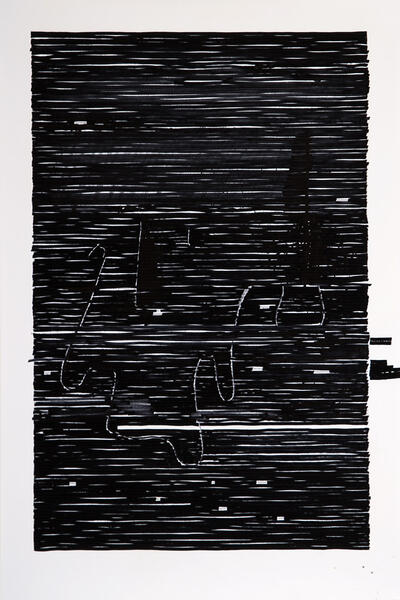 Redaction 6 (complete)24" x 36", 2011, pigment print, sharpie
Redaction 6 (complete)24" x 36", 2011, pigment print, sharpie -
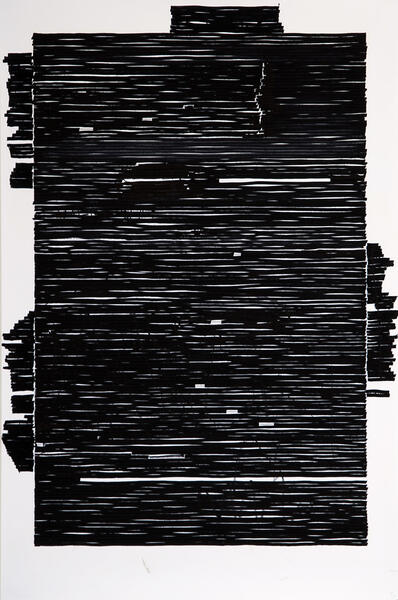 Redaction 524" x 36", 2011, pigment print, sharpie
Redaction 524" x 36", 2011, pigment print, sharpie -
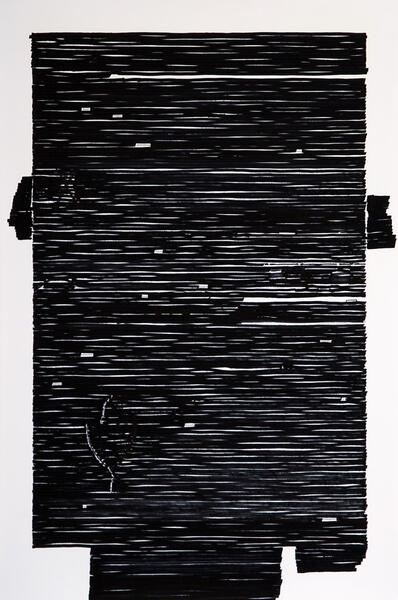 Redaction 424" x 36", 2011, pigment print, sharpie
Redaction 424" x 36", 2011, pigment print, sharpie -
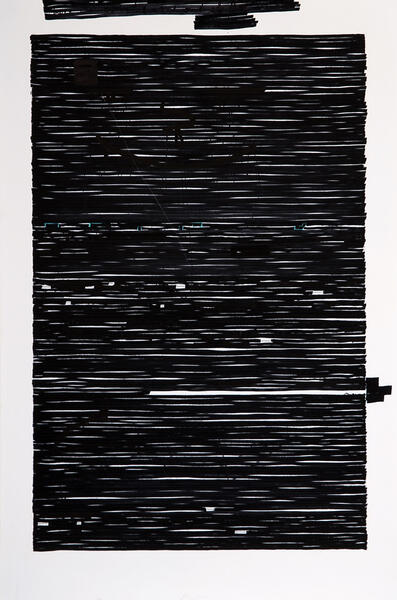 Redaction 324" x 36", 2011, pigment print, sharpie
Redaction 324" x 36", 2011, pigment print, sharpie -
 Redaction 224" x 36", 2011, pigment print, sharpie
Redaction 224" x 36", 2011, pigment print, sharpie -
 Redaction 124" x 36", 2011, pigment print, sharpie
Redaction 124" x 36", 2011, pigment print, sharpie
The Children
The three portraits presented, two of my siblings and one of me, are rubbings of photographs. They explore the capacity of photo-representation to enter the realm of physical presence. By printing the portraits on sensitized polymer plates, I translate the photographs into raised images, like sculptures in relief. Each rubbing becomes a unique event since the rubbing process cannot entirely be controlled.
These images are a portrait of my mother. Each a part of the whole. The remains of her physical presence and the containers of everything intangible about her.
-
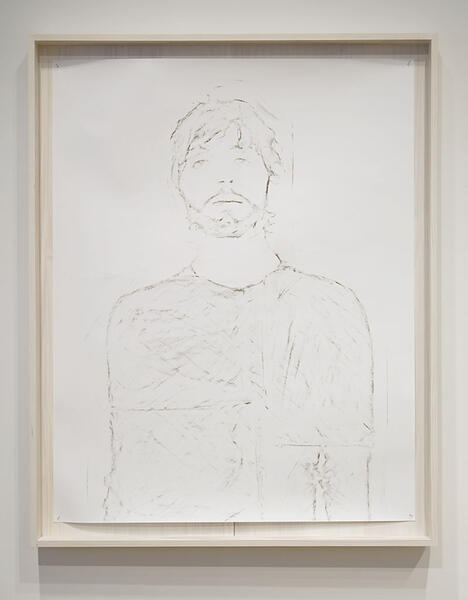 The Children (Will)4' x 5', photographic rubbings, paper, beeswax crayon, wood, nails
The Children (Will)4' x 5', photographic rubbings, paper, beeswax crayon, wood, nails -
 The Children (Katie)4' x 5', photographic rubbings, paper, beeswax crayon, wood, nails
The Children (Katie)4' x 5', photographic rubbings, paper, beeswax crayon, wood, nails -
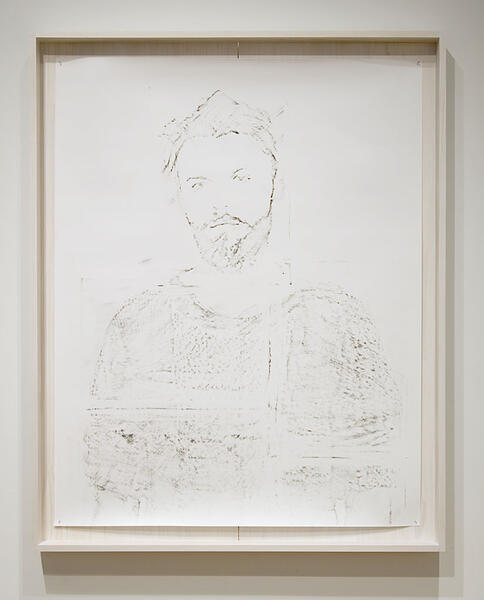 The Children (Luke)4' x 5', photographic rubbings, paper, beeswax crayon, wood, nails
The Children (Luke)4' x 5', photographic rubbings, paper, beeswax crayon, wood, nails -
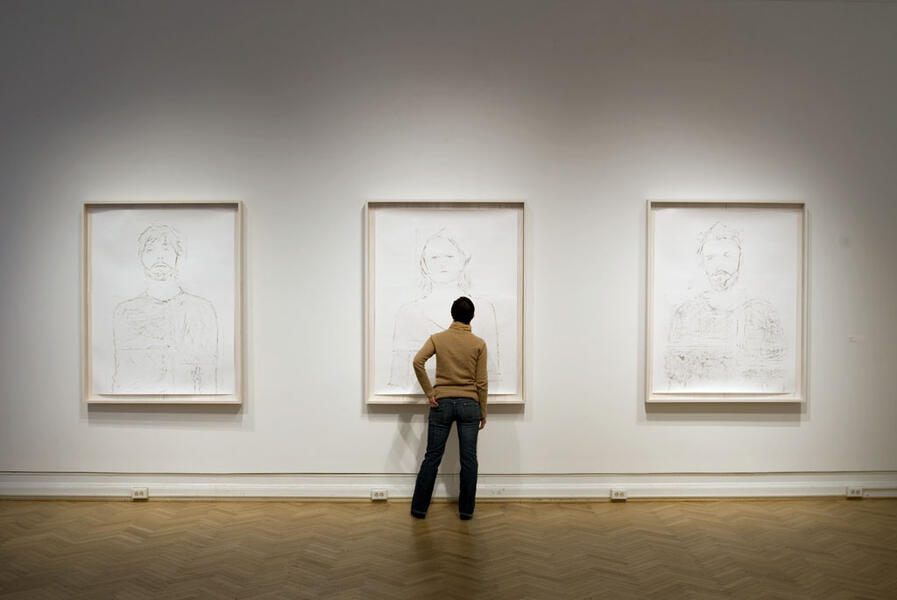 The Childreninstallation view each 4' x 5', photographic rubbings, paper, beeswax crayon, wood, nails
The Childreninstallation view each 4' x 5', photographic rubbings, paper, beeswax crayon, wood, nails

